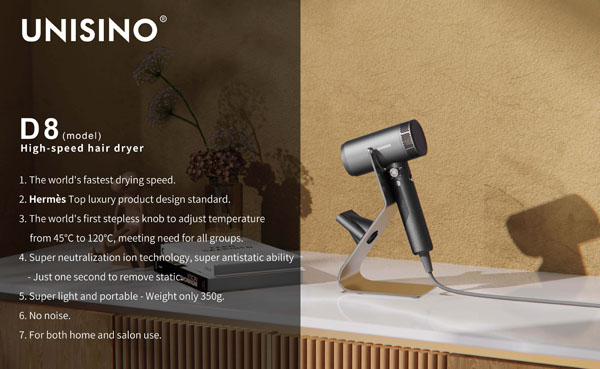
Leave your message and you’ll get:
● 24*7 online service support ● Articles in the hair dryer industry ● Sometimes maybe Discount

● 24*7 online service support ● Articles in the hair dryer industry ● Sometimes maybe Discount
Time:2025-03-06 Views:1

Testing the air volume and temperature of high - speed hair dryers is essential to ensure their performance meets the standards and user expectations.
Air Volume Testing Methods
There are several methods used to test the air volume of high - speed hair dryers. One common method is to use an anemometer. An anemometer is a device that measures the speed of air flow. In the case of hair dryers, the anemometer is placed at the air outlet to measure the velocity of the air stream. By multiplying the measured velocity by the cross - sectional area of the air outlet, the air volume can be calculated. Another method is to use a flow hood. A flow hood is a large, specially designed device that captures the entire air stream from the hair dryer. The flow hood is equipped with sensors that can measure the volume of air passing through it. This method provides a more accurate measurement of the total air volume generated by the hair dryer, as it takes into account any irregularities in the air - flow pattern.
Temperature Testing Procedures
Testing the temperature of high - speed hair dryers is equally important. A thermocouple is a commonly used device for temperature measurement. The thermocouple is placed at various points in the air stream, both near the heating element and at the air outlet, to measure the temperature at different stages of the air - heating process. The hair dryer is typically run at different power settings, and the temperature is measured and recorded at each setting. This helps to determine the maximum and minimum temperatures that the hair dryer can produce and how well it can maintain a consistent temperature. Some advanced testing setups also use infrared thermography to visualize the temperature distribution across the air stream, which can provide valuable insights into the efficiency of the heating and air - mixing processes.
Performance Evaluation and Standards
Based on the air volume and temperature test results, the performance of high - speed hair dryers can be evaluated. Manufacturers often compare the test results with industry standards and their own product specifications. For example, a high - speed hair dryer may be designed to produce a minimum air volume of a certain cubic feet per minute (CFM) and maintain a specific temperature range for effective hair drying. If the test results fall below these standards, the hair dryer may need to be redesigned or adjusted. In addition, user - feedback - based performance evaluation may also be considered, as factors such as the drying time and the perceived comfort of the air temperature are important to end - users.